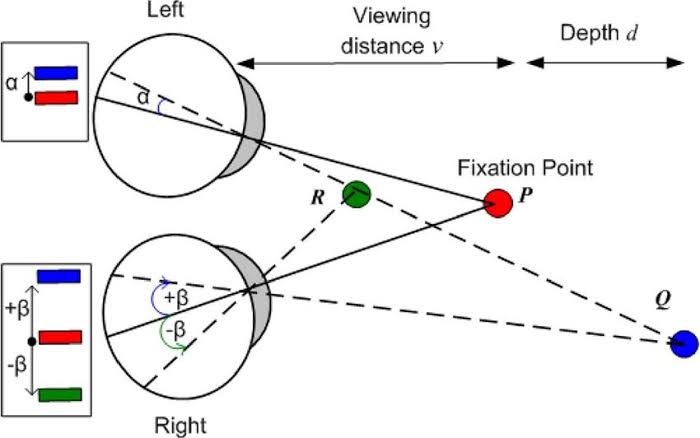
Colour vision and stereopsis
Colour vision
Color vision, the ability to discriminate variations in the wavelength of light independent of intensity, involves multiple stages of processing. Each region of the retina has cone photoreceptors containing photopigments of different spectral sensitivities. Since each photopigment absorbs light across the spectrum, the output of a single cone cannot specify either the wavelength or the intensity of light, nor allow one to distinguish the spectral characteristics of an object from those of its illuminant. To do this requires comparing the outputs of different cone types within the retina. Separate cell types, feeding up separate channels to the cortex, compute the sum of the L(ong) and M(iddle) cones in each small region (L+M); the difference between the outputs of the L and M cones (L-M); and the difference between the outputs of the S(hort) cones and the sum of the L and M cones (S-LM). The opponent retinal organization begins to separate wavelength from intensity variations. It also produces the perceptual opponency between red and green and between blue and yellow. Later cortical processing is required to complete the separation of color and intensity and distinguish the characteristics of reflected objects from those of the illuminant.
Stereopsis
Binocular disparity provides the visual system with information concerning the three-dimensional layout of the environment. Recent physiological studies in the primary visual cortex provide a successful account of the mechanisms by which single neurons are able to signal disparity. This work also reveals that additional processing is required to make explicit the types of signal required for depth perception (such as the ability to match features correctly between the two monocular images). Some of these signals, such as those encoding relative disparity, are found in extrastriate cortex. Several other lines of evidence also suggest that the link between perception and neuronal activity is stronger in extrastriate cortex (especially MT) than in the primary visual cortex.
by the end of this lesson, students should be able to learn
1. Colour vision and receptors involved
2. Colour blindness and its types
3. Depth perception


